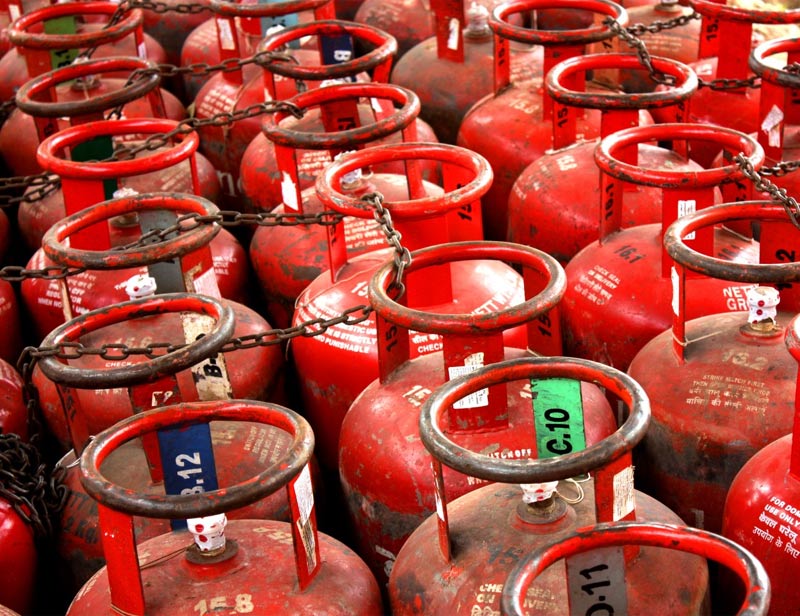Liquefied petroleum gas (LPG)
Liquefied petroleum gas (LPG) is a mixture of gaseous hydrocarbons which has a wide variety of applications. It is produced as an associated gas from natural gas streams and oil extraction as well as from oil refining, and can either be captured or destroyed through flaring or venting.
LPG can be a convenient and clean alternative to natural gas, electric heating or kerosene. It is often used to provide energy to areas without direct access to piped natural gas, to provide off-the-grid refrigeration, and as a power source for combined heat and power (CHP) technologies.
First produced in 1910, LPG now supplies approximately 3% of total energy demand. It is clean in that it burns with no soot and few sulphur emissions, and while it can contribute to air pollution, it does not pose ground or water pollution hazards.
Propane and butane are the two forms in which LPG exists, with their property differences making them suited to particular uses. Propane has a lower boiling point and is better suited to outdoor storage, central heating and other commercial applications. Butane is better suited to indoor applications, such as for powering portable heaters.
The boiling point of LPG is below room temperature, meaning that at normal temperatures and pressures it will evaporate quickly. Therefore, LPG is often stored and supplied in pressurised steel containers such as tanks, cylinders and disposable canisters. These are usually filled to 80-85% capacity to allow for thermal expansion of the LPG in liquefied form.
LPG is widely used in construction, such as for bitumen boilers, heating site accommodation, drying out structural elements, curing concrete, and so on. On construction sites, LPG is usually found in cylinders rather than bulk storage vessels, which are often used when LPG is supplying central heating and/or larger commercial applications.
LPG can burn or explode when in combination with oxygen if there is an ignition source. Containers of LPG may explode if exposed to fire. Other hazards include causing cold burns to skin when in liquid form, as well as non-toxic leakage of LPG displacing oxygen and potentially causing asphyxiation.
Under the Health and Safety at Work, etc. Act 1974, and subsequent legislation, site managers have a responsibility to protect against risks where LPG is being used. Appropriate risk assessments should be carried out under the Control of Substances Hazardous to Health Regulations 2002, particularly when LPG cylinders will be moved using manual handling.
In terms of construction site storage of LPG cylinders, they should:
- Be bept away from combustible material.
- Be kept away from potential ignition sources.
- Be kept away from occupied buildings.
- Not exposed to excessive heat.
- Be stored at least 3 m from cylinders containing oxygen, chlorine, ammonia, etc.
- Be kept in a vertical position.
- Be stored with appropriate fire extinguishers.
- Have prominent displays indicating high flammability, no smoking or naked flames, and so on.
- Be stored securely.
Appropriate evacuation and other safety procedures should be in place in case of fire or leaks. Site staff should be given appropriate information and training regarding LPG.
When being used for the heating of site facilities, the cylinders should be located outside the building, with fixed pipework taking the gas supply inside. Heaters should also have proper, and regularly checked, ventilation. Gas Safe-registered installers should be used to install fixed appliances.
[edit] Related articles on Designing Buildings Wiki
Featured articles and news
International Electrician Day, 10 June 2025
Celebrating the role of electrical engineers from André-Marie Amperè, today and for the future.
New guide for clients launched at Houses of Parliament
'There has never been a more important time for clients to step up and ...ask the right questions'
The impact of recycled slate tiles
Innovation across the decades.
EPC changes for existing buildings
Changes and their context as the new RdSAP methodology comes into use from 15 June.
Skills England publishes Sector skills needs assessments
Priority areas relating to the built environment highlighted and described in brief.
BSRIA HVAC Market Watch - May 2025 Edition
Heat Pump Market Outlook: Policy, Performance & Refrigerant Trends for 2025–2028.
Committing to EDI in construction with CIOB
Built Environment professional bodies deepen commitment to EDI with two new signatories: CIAT and CICES.
Government Grenfell progress report at a glance
Line by line recomendation overview, with links to more details.
An engaging and lively review of his professional life.
Sustainable heating for listed buildings
A problem that needs to be approached intelligently.
50th Golden anniversary ECA Edmundson apprentice award
Deadline for entries has been extended to Friday 27 June, so don't miss out!
CIAT at the London Festival of Architecture
Designing for Everyone: Breaking Barriers in Inclusive Architecture.
Mixed reactions to apprenticeship and skills reform 2025
A 'welcome shift' for some and a 'backwards step' for others.
Licensing construction in the UK
As the latest report and proposal to licence builders reaches Parliament.
Building Safety Alliance golden thread guidance
Extensive excel checklist of information with guidance document freely accessible.
Fair Payment Code and other payment initiatives
For fair and late payments, need to work together to add value.
Pre-planning delivery programmes and delay penalties
Proposed for housebuilders in government reform: Speeding Up Build Out.
High street health: converting a building for healthcare uses
The benefits of health centres acting as new anchor sites in the high street.

























